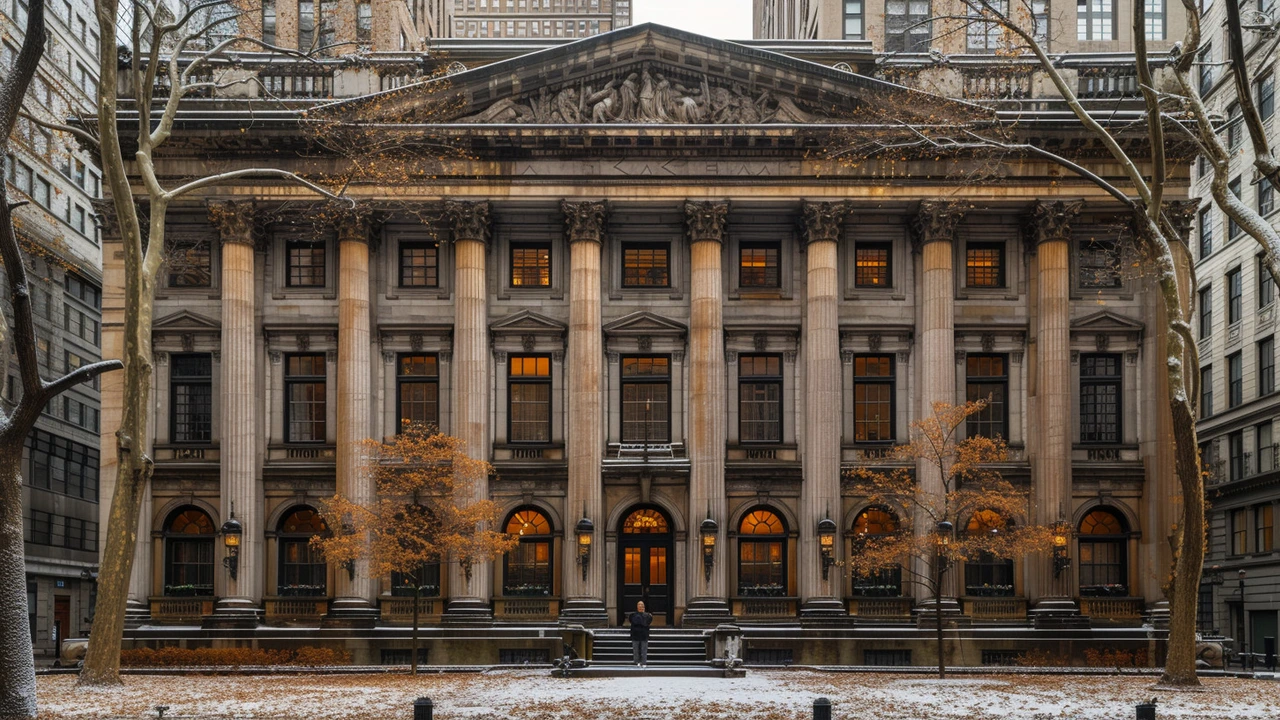Hey everyone, it's your favorite design enthusiast here! Have you ever noticed how the grand, symmetrical designs of Federal architecture have seeped into our homes' interiors? It's like these historical buildings have whispered their secrets into the very fabric of our modern living spaces. I'm diving into how the elegant and authoritative vibes of pillars, domes, and classic ornamentation are transforming our contemporary design choices. It's fascinating to see these timeless elements giving a distinctive character to interior aesthetics, blending old-world charm with the comfort of the modern world. Stick with me as I unwrap the layers of influence that Federal architecture has had on interior design!
Federal Architecture Influence: How Classic Rules Shape Modern Buildings
Federal architecture refers to the American style that grew after the Revolutionary War. Think balanced facades, simple lines, brick or clapboard, and a calm, formal look. It borrowed from Georgian and Roman ideas but aimed for a new national identity. If you want to spot federal influence today, look for symmetry, slender columns, elliptical fanlights, and low decorative restraint.
The style started around 1780 and peaked by 1830. Architects such as Charles Bulfinch and Benjamin Latrobe refined its proportions and details. They used classical motifs but kept things lighter than European precedents. That made federal buildings feel dignified without being heavy, which suited a young republic that valued order and restraint.
Key features to recognize
Watch for a few repeating features. Symmetry is almost always present: windows and doors lined up like a neat row of soldiers. Entryways often have fan-shaped windows above the door, sidelights, and thin columns or pilasters. Windows commonly have six-over-six panes and are evenly spaced. Roofs are usually low-pitched or flat, sometimes with a balustrade. Materials are plain: brick, wood clapboard, and stone are common.
Federal influence also shows up in ornament choices. Instead of heavy Baroque details, you’ll find delicate swags, urns, and small medallions. Interiors favored refined plasterwork, narrow moldings, and elegant mantels. The overall palette stayed restrained—soft whites, muted earth tones, and warm brick reds.
Why federal style still matters
Federal ideas appear in civic buildings, banks, and private homes across the U.S. Even modern architects borrow federal traits when they want a conservative, classic look. You’ll see symmetry and simple classical references in courthouse renovations, college campus buildings, and upscale housing. Designers like federal proportions because they feel trustworthy and timeless.
If you’re restoring a historic house, federal influence gives a clear roadmap. Keep window patterns, restore original fanlights, and match clapboard or brick mortar color. For new builds that nod to the past, use balanced proportions, modest columns, and restrained trim rather than heavy reproductions. Small details—like a correctly sized transom or a narrow cornice—make the difference.
Walking through an old neighborhood, spot the federal touch by comparing entries and windows. A true federal facade feels composed: nothing fights for your attention. That quiet order is its charm. It’s also practical—good natural light from regular windows and straightforward layouts that suit modern conversions.
Federal architecture influence keeps a link to early American ideals—order, simplicity, and civic dignity. Whether you’re a homeowner, student, or designer, recognizing these traits helps you read buildings faster and make better design choices. Want a quick exercise? Pick three nearby historic buildings and note their symmetry, door surround, and window pattern. You’ll start seeing federal echoes everywhere.
For designers, mix federal cues with modern materials — steel-framed windows with traditional muntin patterns, or simplified cornices in composite materials. For preservation, document original paint colors and hardware before changes. Small accurate fixes keep authenticity while allowing new uses, keeping the style alive without museum isolation. Aim for lasting balance.

